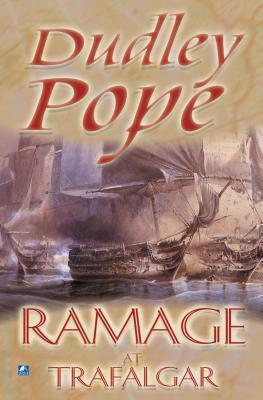The year is 1805. A combined fleet of some 40 French and Spanish ships has taken shelter in the harbor of Cádiz. News of this development reaches both Ramagestill a dashing young frigate captain with his whole career ahead of himand Admiral Lord Horatio Nelson, the hero of such battles as Copenhagen and the Nile. In spite of his meager stature, the loss of one eye and one arm, and the scandal of his liaison with Lady Hamilton (another officer’s widow, with whom he fathered a child while both were married to other people), Nelson is his country’s best hope at a crucial point in the war against France. His brilliant tactics have revolutionized naval warfare, changing the nature of a fleet battle from a stately encounter between two straight, roughly parallel lines of ships to a headlong rush at a right angle to the enemy’s line, with the unprecedented object of destroying the whole enemy fleet. And now these tactics are the only guarantee against Napoleon’s unbeatable army landing on British shores.
Though His Majesty’s Frigate Calypso took no part in the battle of Trafalgar, its crew and its captain adorn the historic battle with some fictional exploits of their own. Nevertheless, the great fascination of this novel is the opportunity to witness, as if at first-hand, the suspenseful preparations for the battle in which some 75 ships took part, including the largest ship in the world at that time. Vast forces are arrayed against each other, enormous stakes are on the table, and yet naval historian Pope stresses that through it all, both sides were at the mercy of fickle winds, menaced by treacherous shoals, and hampered by a shortage of spars, sails, rigging, and stores after a long blockade. Then there was the question of whether or not the French and Spanish would come out of Cádiz to fight at all; a question finally decided by a complex web of circumstances, including political intrigues, financial desperation, and a commander-in-chief’s loss of nerve.
The results are spectacular, though for full details you might want to check into a non-fiction account. Not to be outdone by his nonfictional colleagues, Ramage takes some thrilling risks with his little frigate, in spite of frequent reminders that frigates are not supposed to get involved in the battle. And though Nelson’s death made his final victory bittersweet, Ramage lives on to fight in two more novels: Ramage and the Saracens and Ramage and the Dido.
Recommended Age: 14+




